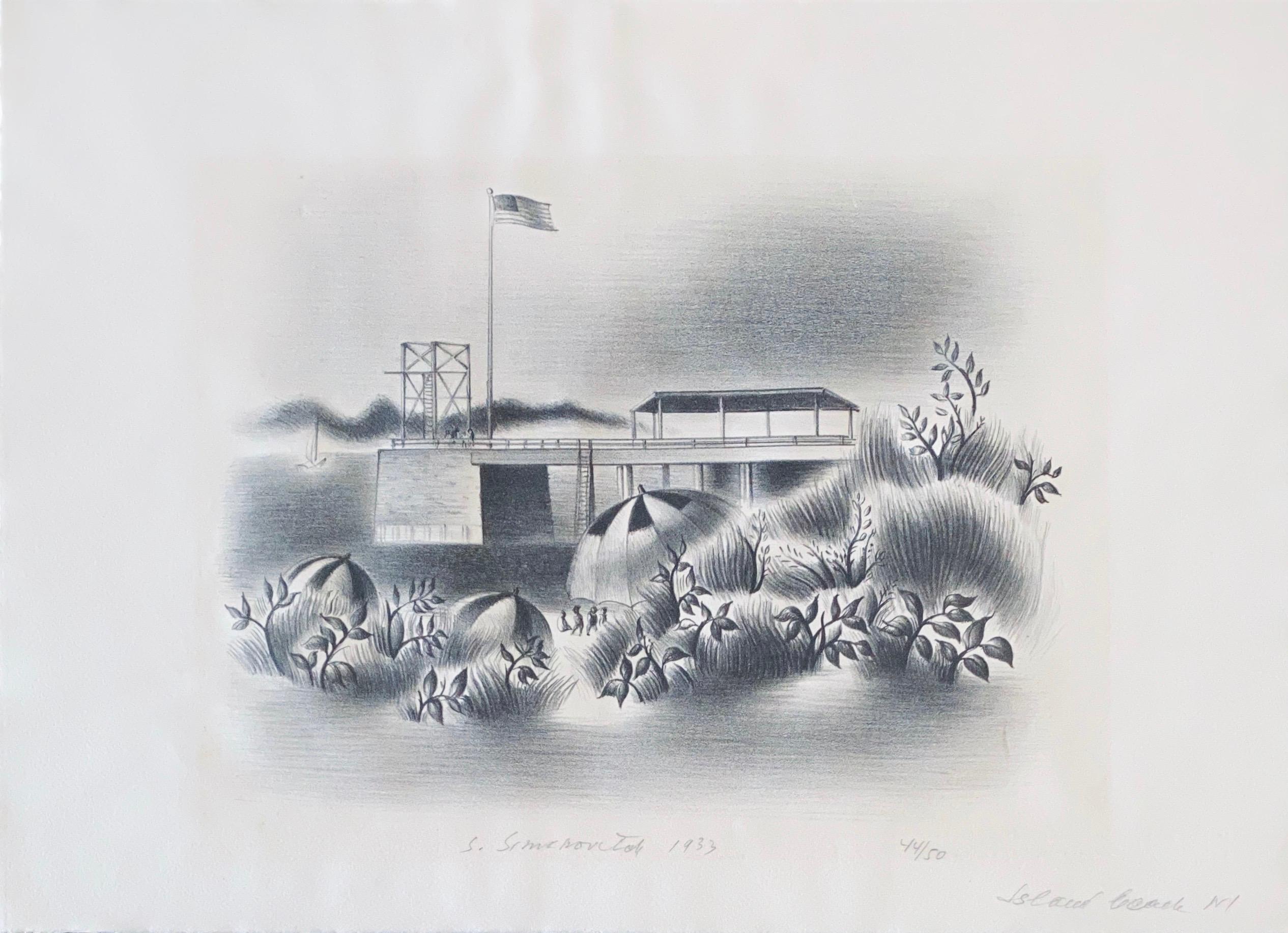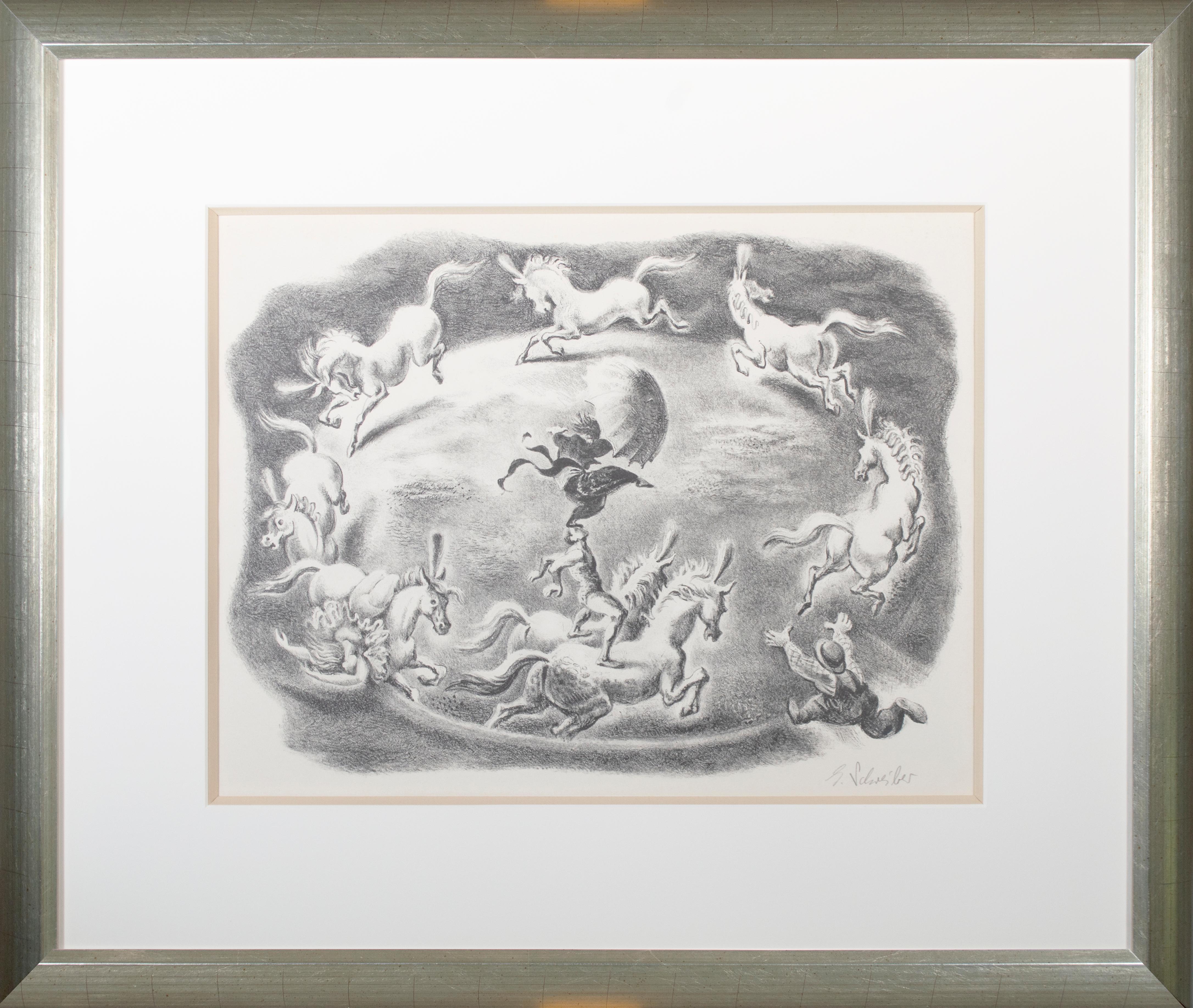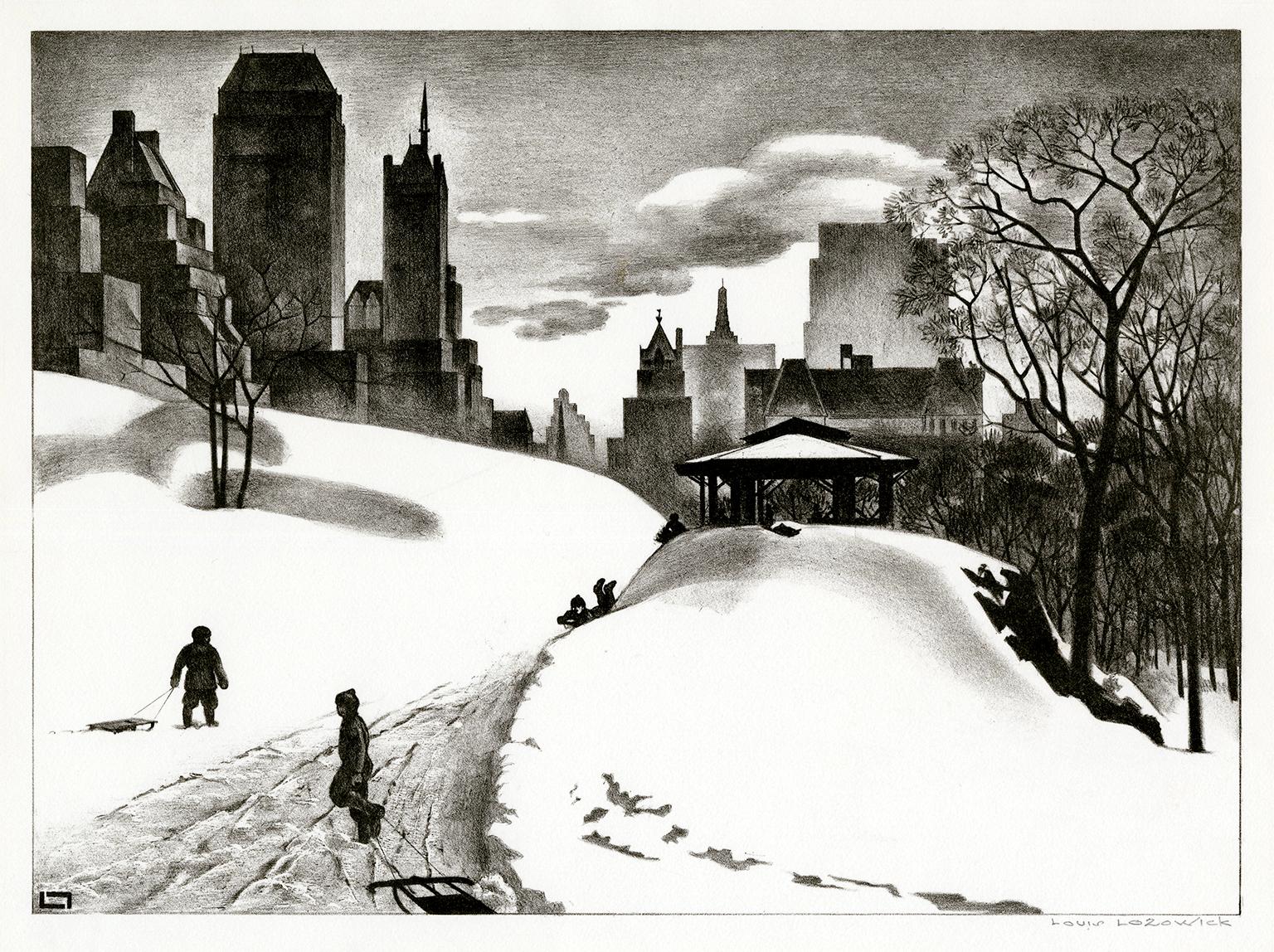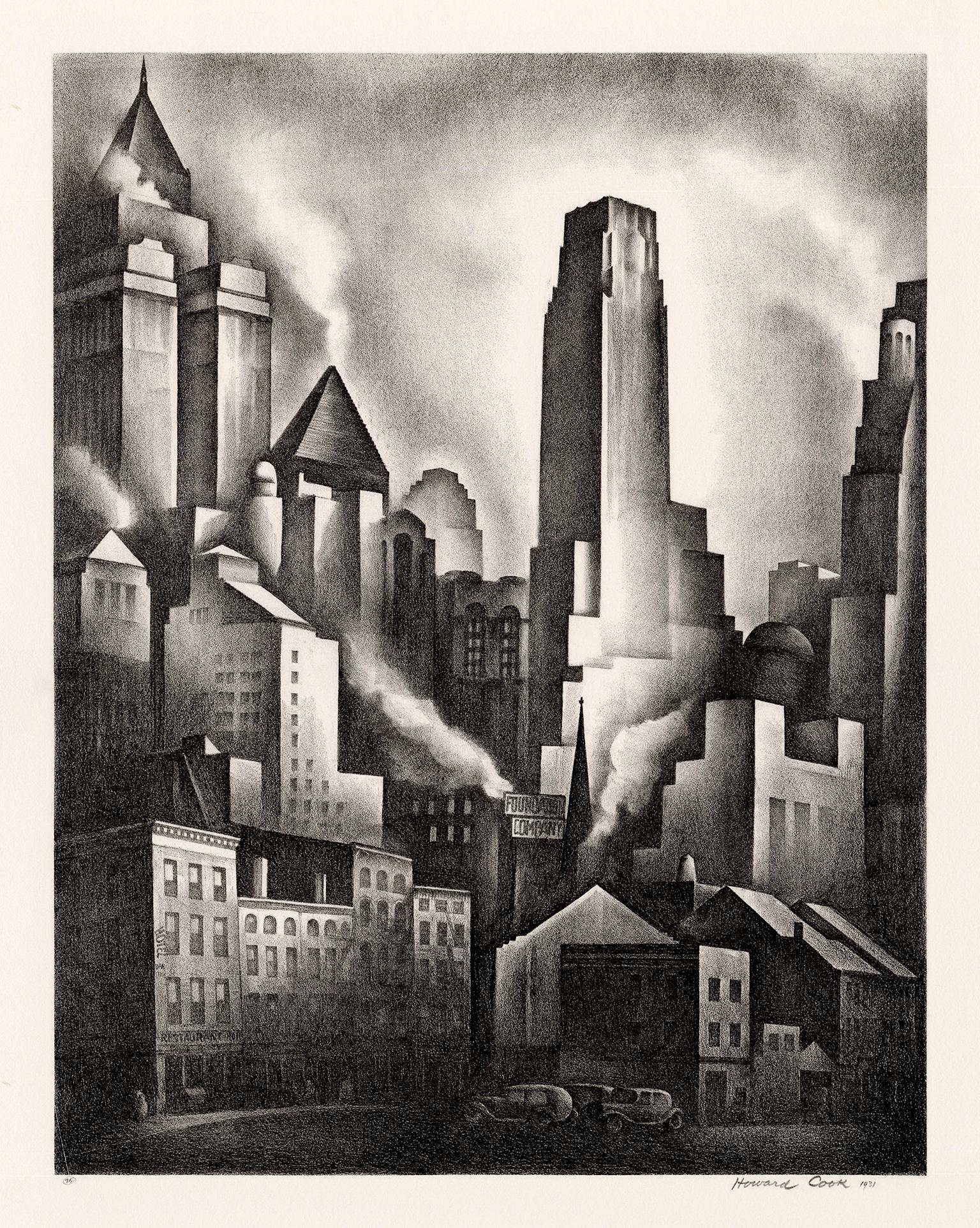Francisco DosamantesMayan Trio1950
1950
About the Item
- Creator:Francisco Dosamantes (1911 - 1986, Mexican)
- Creation Year:1950
- Dimensions:Height: 13 in (33.02 cm)Width: 10.5 in (26.67 cm)
- Medium:
- Movement & Style:
- Period:
- Condition:
- Gallery Location:Fairlawn, OH
- Reference Number:
Francisco Dosamantes
Francisco Dosamantes was born in Mexico City on October 4, 1911, son of artist and builder Daniel Dosamantes. Encouraged by his father and his uncle Juan he began studying art. The Mexican Revolution occurred while he was a young child and he stated that he remembered events such as soldiers on horses charging as well as the execution of rural farmworkers, events that would inform his work for the rest of his life. Dosamantes attended primary and high school in Mexico City but stated that his education was irregular and deficient. He then entered the Escuela Nacional de Artes Plásticas, where he studied for five years. After graduating, Dosamantes worked at various cultural missions from 1932–45, where he worked with the rural farm workers and became a champion of their causes. In Mexico City, he taught classes in high schools from 1937–41. In 1945, Dosamantes founded and directed the Taller Escuela de Dibujo y Pintura. He was a member of Liga de Escritores y Artistas Revolucionarios between 1934–38. Dosamantes was a member of the LEAR in the mid-1930s, before joining the TGP in 1937. Also before working with the TGP, Dosamantes studied at the Academia de San Carlos and, in 1928, was a part of the painters’ organization Treinta-treinta. In 1937, he was a founding member of the Taller de Gráfica Popular (TGP). In 1940, he became the secretary-general of the Sindicato de Maestros de Artes Plásticas. Dosamantes is primarily known as a printmaker but he also painted several murals in rural areas of Mexico between 1941–46, generally when he was there on cultural missions. As a book illustrator, he primarily worked for the Secretaría de Educación Pública working on books for literacy campaigns. Dosamantes died in Mexico City on July 18, 1986.
- ShippingRetrieving quote...Ships From: Akron, OH
- Return PolicyA return for this item may be initiated within 10 days of delivery.
- Feast of Lights: HanukkahBy Abraham RattnerLocated in Fairlawn, OHFeast of Lights (Poster) Signed in the stone 17 color lithograph Published by Kennedy Galleries Edition: Unknown edition, signed in the stone There was also a pencil signed edition o...Category
1970s American Modern Figurative Prints
MaterialsLithograph
- Man Sounding Horn (Psalm 150)By Ben ShahnLocated in Fairlawn, OHMan Sounding Horn (Psalm 150) Lithograph, 1969-1970 Estate signed: "Ben Shahn/by B.B. Shahn" in pencil lower center Stamped signature lower right (see photo) Signed by Mourlot Lith. in pencil lower right (see photo) Edition: 125 (67/125) see photo Psalm 150, "A Hallelujah Chorus" Published by Kennedy Graphics, Ltd., New York, NY Printed by Mourlot Graphics, Ltd., New York, NY Reference: Prescott 255 Kennedy Galleries, The Kennedy Graphics, 380, reproduced Condition: Very good Image/sheet size: 20 1/8 x 25 3/8 inches A posthumous print "This was the final project completed by Ben Shahn (1898-1969), leading American realist painter and muralist widely recognized for his socially conscious works. Born in Lithuania to Jewish parents, Shahn emigrated to the United States in 1906 and became a popular and versatile artist who worked in a variety of media and on a range of projects. His credits are as varied as assistant to muralist Diego Rivera, photographer for the Resettlement Administration (alongside the likes of Dorothea Lange and his friend, Walker Evans), maker of posters for the Office of War Information during WWII, and commercial artist for CBS. He is best known, however, for artwork depicting left-leaning political ideals and highlighting social concerns, such as his series of gouache paintings known as "The Passion of Sacco and Vanzetti...Category
1960s American Modern Figurative Prints
MaterialsLithograph
- Diana Raised 1By Larry RiversLocated in Fairlawn, OHDiana Raised 1 Lithograph from four stones, 1970 Signed and dated lower right (see photo) Annotated "PP" for Printers Proof lower right (see photo) Publisher: ULAE ULAE blindstamp lo...Category
1970s American Modern Figurative Prints
MaterialsLithograph
- Orchestra (or Music)By Adolf DehnLocated in Fairlawn, OHOrchestra (or Music) Lithograph, 1928 Signed, titled and numbered in pencil Edition: 30 This print numbered 15/30 Printed by Edmond Desjobert, Paris Condition: Excellent Provenance: ...Category
1920s American Modern Figurative Prints
MaterialsLithograph
- Profile Bust of a Girl - Woman's Head in Profile (Havard)By Elie NadelmanLocated in Fairlawn, OHProfile Bust of a Girl - Woman's Head in Profile (Havard) Drypoint, 1920 Unsigned (as issued) From: The Drypoints of Elie Nadelman, 21 unpublished prints by the sculptor, proof from ...Category
1920s American Modern Figurative Prints
MaterialsDrypoint
- Girl's Head - Woman's Head (Harvard)By Elie NadelmanLocated in Fairlawn, OHGirl's Head - Woman's Head (Harvard) Drypoint, 1920 Unsigned (as issued) From: The Drypoints of Elie Nadelman, 21 unpublished prints by the sculptor, proof from the original zinc and copper plates, 1952 Published by Curt Valentin, New York Edition: unknown Printed by Charles S. White, master printer Printed on Van Gelder Zonen laid paper with armorial watermark A complete portfolio is in the collection of Harvard Art...Category
1920s American Modern Figurative Prints
MaterialsDrypoint
- Simka Simkhovitch WPA Artist Lithograph Island Beach 1933 American ModernistBy Simka SimkhovitchLocated in Surfside, FLSimka Simkhovitch (Russian/American 1893 - 1949) signed lithograph. Pencil signed and dated "S. Simkhovitch 1933" lower center. Title "Island Beach," in pencil lower left of sheet. Numbered "44/50" in pencil lower right. (it is either Island Beach Wisconsin or New Jersey) Simka Simkhovitch (Симха Файбусович Симхович) (aka Simka Faibusovich Simkhovich) (Novozybkov, Russia May 21, 1885 O.S./June 2, 1885 N.S.—Greenwich, Connecticut February 25, 1949) was a Ukrainian-Russian Jewish artist and immigrant to the United States. He painted theater scenery in his early career and then had several showings in galleries in New York City. Winning Works Progress Administration (WPA) commissions in the 1930s, he completed murals for the post offices in Jackson, Mississippi and Beaufort, North Carolina. His works are in the permanent collections of the Dallas Museum of Art, the National Museum of American Art and the Whitney Museum of American Art. Born outside Kyiv (Petrograd Ukraine) into a Jewish family who owned a small department store. During a severe case of measles when he was seven, Simcha Simchovitch sketched the views outside his window and decided to become an artist, over his father's objections. Beginning in 1905, he studied at the Grekov Odessa Art School and upon completion of his studies in 1911 received a recommendation to be admitted to the Imperial Academy of Arts. Though he enrolled to begin classes in architecture, painting, and sculpture at the Imperial Academy, he was dropped from the school roster in December because of the quota on the number of Jewish students and drafted into the army. Simchovitch served as a private in the 175th Infantry Regiment Baturyn [ru] until his demobilization in 1912. Re-enrolling in the Imperial Academy, he audited classes. Simka Simkhovitch exhibited paintings and sculptures in 1918 as part of an exhibition of Jewish artists and in 1919 placed 1st in the competition "The Great Russian Revolution" with a painting called "Russian Revolution" which was hung in the State Museum of Revolution. In 1922, Simkha Simkhovitch exhibited at the International Book Fair in Florence (Italian: Fiera Internazionale del Libro di Firenze). In 1924, Simkhovitch came to the United States to make illustrations for Soviet textbooks and decided to immigrate instead. Initially he supported himself by doing commercial art and a few portrait commissions. In 1927, he was hired to paint a screen for a scene in the play "The Command to Love" by Fritz Gottwald and Rudolph Lothar which was playing at the Longacre Theatre on Broadway. Art dealers began clamoring for the screen and Simkhovitch began a career as a screen painter for the theater. Catching the attention of the screenwriter, Ernest Pascal, he worked as an illustrator for Pascal, who then introduced him to gallery owner, Marie Sterner. Simkhovitch's works appeared at the Marie Sterner Gallery beginning with a 1927 exhibit and were repeated the following year. Simkhovitch had an exhibit in 1929 at Sterner's on circus paintings. In 1931, he held a showing of works at the Helen Hackett Gallery, in New York City and later that same year he was one of the featured artists of a special exhibit in San Francisco at the California Palace of the Legion of Honor in Lincoln Park. The exhibit was coordinated by Marie Sterner and included four watercolors, including one titled "Nudes". He is of the generation of Russian Soviet artists such as Isaac Pailes, Serge Charchoune, Marc Chagall, Chana Orloff, Isaac Ilyich Levitan, and Ossip Zadkine. In 1936, Simkhovitch was selected to complete the mural for the WPA Post office project in Jackson, Mississippi. The mural was hung in the post office and courthouse in 1938 depicted a plantation theme. Painted on the wall behind the judge’s bench, “Pursuits of Life in Mississippi”, a depiction of black workers engaged in manual labor amid scenes of white professionals and socialites, was eventually covered over in later years during renovations due to its stereotypical African American imagery. The following year, his painting "Holiday" won praise at an exhibition in Lincoln, Nebraska. In 1940, Simkhovitch's second WPA post office project was completed when four murals, "The Cape Lookout Lighthouse and the Orville W. Mail Boat", "The Wreck of the Crissie Wright", "Sand Ponies" and "Canada Geese" were installed in Beaufort, North Carolina. The works were commissioned in 1938 and did not generate the controversy that the Jackson mural had. The main mural is "The Wreck of the Crissie Wright" and depicts a shipwreck which had occurred in Beaufort in 1866. "The Cape Lookout Lighthouse and the Orville W. Mail Boat" depicted the lighthouse built in 1859 and the mail boat that was running mail during the time which Simkhovitch was there. The boat ran mail for the area until 1957. "Sand Ponies" shows the wild horses common to the North Carolina barrier islands and "Canada Geese" showed the importance of hunting and fishing in the area. All four murals were restored in the 1990s by Elisabeth Speight, daughter of two other WPA muralists, Francis Speight...Category
1930s American Modern Landscape Prints
MaterialsLithograph
- 'Circular Motion' original lithograph signed by Georges SchreiberBy Georges SchreiberLocated in Milwaukee, WIIn this lithograph, Georges Schreiber focused on the thrill of the circus, taking its circular composition from the central ring. Here, acrobats perform amazing feats of agility on t...Category
1940s American Modern Animal Prints
MaterialsLithograph
- Original Germany Anytime is Travel Time in Germany vintage 1956 posterLocated in Spokane, WAOriginal Any Time is Travel Time in Germany vintage railroad poster. German Federal Railway. Archival linen backed, very condition, ready ...Category
1950s American Modern Figurative Prints
MaterialsLithograph
- September MornBy Joseph HirschLocated in New Orleans, LAThree women strolling on a beach. This impression is one of the rare impressions printed monochromatically. Hirsch natural inclination was to print in lack and white but reprinted ...Category
1960s American Modern Nude Prints
MaterialsLithograph
- Winter Fun — Mid-century Modernism, Central Park, New York CityBy Louis LozowickLocated in Myrtle Beach, SCLouis Lozowick, 'Winter Fun', lithograph, 1940, edition 20, 250 (1941). Flint 188. Signed in pencil, with the artist’s monogram in the stone, lower left. A...Category
1940s American Modern Figurative Prints
MaterialsLithograph
- 'Financial District', New York City — 1930s American ModernismBy Howard Norton CookLocated in Myrtle Beach, SCHoward Cook, 'Financial District', lithograph, 1931, edition 75, Duffy 155. A fine, richly-inked impression, on cream wove paper, the full sheet with wide margins (2 3/4 to 5 5/8 inches), in excellent condition. Image size 13 5/16 x 10 3/8 inches (338 x 264 mm); sheet size 23 x 16 inches (584 x 406 mm). Matted to museum standards, unframed. Literature: 'American Master Prints from the Betty and Douglas Duffy Collection', the Trust for Museum Exhibitions, Washington, D.C., 1987. Collections: Crystal Bridges Museum of American Art, Library of Congress, Metropolitan Museum of Art, Philadelphia Museum of Art, Smithsonian American Art Museum. ABOUT THE ARTIST Howard Norton Cook (1901-1980) was one of the best-known of the second generation of artists who moved to Taos. A native of Massachusetts, he studied at the Art Students League in New York City and at the Woodstock Art Colony. Beginning his association with Taos in 1926, he became a resident of the community in the 1930s. During his career, he received two Guggenheim Fellowships and was elected an Academician in the National Academy of Design. He earned a national reputation as a painter, muralist, and printmaker. Cook’s work in the print mediums received acclaim early in his career with one-person exhibitions at the Denver Art Museum (1927) and the Museum of New Mexico (1928). He received numerous honors and awards over the years, including selection in best-of-the-year exhibitions sponsored by the American Institute of Graphics Arts, the Brooklyn Museum, the Society of American Etchers, and the Philadelphia Print Club. His first Guggenheim Fellowship took him to Taxco, Mexico in 1932 and 1933; his second in the following year enabled him to travel through the American South and Southwest. Cook painted murals for the Public Works of Art Project in 1933 and the Treasury Departments Art Program in 1935. The latter project, completed in Pittsburgh, received a Gold Medal from the Architectural League of New York. One of his most acclaimed commissions was a mural in the San Antonio Post Office in 1937. He and Barbara Latham settled in Talpa, south of Taos, in 1938 and remained there for over three decades. Cook volunteered in World War II as an Artist War Correspondent for the US Navy, where he was deployed in the Pacific. In 1943 he was appointed Leader of a War Art Unit...Category
1930s American Modern Figurative Prints
MaterialsLithograph






